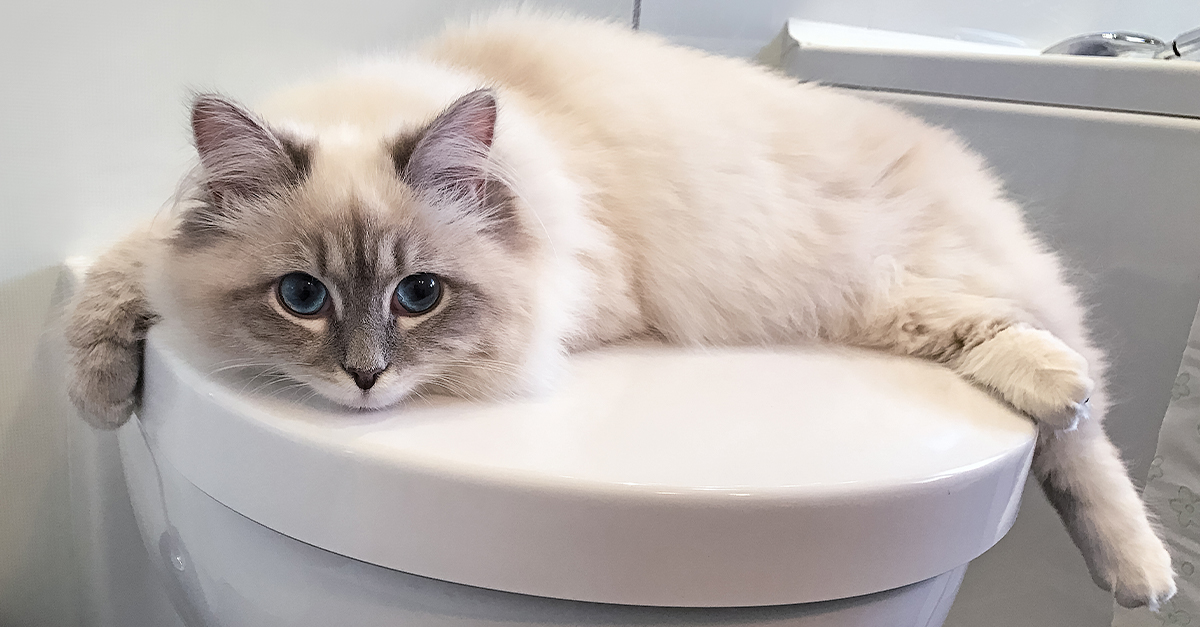Prevent Bathroom Emergencies: Never Flush Cat Poop Down Your Toilet - Professional Guidance
Prevent Bathroom Emergencies: Never Flush Cat Poop Down Your Toilet - Professional Guidance
Blog Article
On this page in the next paragraph you will find a lot of brilliant information and facts on the subject of How to Dispose of Cat Poop and Litter Without Plastic Bags.

Introduction
As cat proprietors, it's necessary to be mindful of just how we throw away our feline buddies' waste. While it might appear convenient to flush feline poop down the bathroom, this technique can have destructive consequences for both the environment and human health.
Environmental Impact
Flushing cat poop introduces hazardous microorganisms and parasites into the water supply, posing a significant threat to marine communities. These contaminants can adversely impact aquatic life and compromise water top quality.
Health and wellness Risks
Along with environmental problems, flushing pet cat waste can likewise posture health dangers to humans. Feline feces might contain Toxoplasma gondii, a bloodsucker that can cause toxoplasmosis-- a potentially extreme disease, especially for pregnant ladies and people with weakened immune systems.
Alternatives to Flushing
Thankfully, there are safer and extra accountable methods to deal with feline poop. Think about the adhering to alternatives:
1. Scoop and Dispose in Trash
The most typical technique of disposing of cat poop is to scoop it right into a naturally degradable bag and throw it in the trash. Make sure to utilize a committed trash inside story and throw away the waste quickly.
2. Use Biodegradable Litter
Select naturally degradable cat trash made from products such as corn or wheat. These litters are eco-friendly and can be securely thrown away in the garbage.
3. Bury in the Yard
If you have a yard, consider hiding pet cat waste in an assigned area away from veggie gardens and water sources. Be sure to dig deep adequate to stop contamination of groundwater.
4. Mount a Pet Waste Disposal System
Invest in a family pet garbage disposal system specifically developed for feline waste. These systems utilize enzymes to break down the waste, decreasing smell and environmental effect.
Verdict
Responsible pet possession expands beyond providing food and shelter-- it additionally entails proper waste monitoring. By refraining from purging pet cat poop down the toilet and going with alternative disposal techniques, we can decrease our environmental footprint and shield human health.
Why Can’t I Flush Cat Poop?
It Spreads a Parasite
Cats are frequently infected with a parasite called toxoplasma gondii. The parasite causes an infection called toxoplasmosis. It is usually harmless to cats. The parasite only uses cat poop as a host for its eggs. Otherwise, the cat’s immune system usually keeps the infection at low enough levels to maintain its own health. But it does not stop the develop of eggs. These eggs are tiny and surprisingly tough. They may survive for a year before they begin to grow. But that’s the problem.
Our wastewater system is not designed to deal with toxoplasmosis eggs. Instead, most eggs will flush from your toilet into sewers and wastewater management plants. After the sewage is treated for many other harmful things in it, it is typically released into local rivers, lakes, or oceans. Here, the toxoplasmosis eggs can find new hosts, including starfish, crabs, otters, and many other wildlife. For many, this is a significant risk to their health. Toxoplasmosis can also end up infecting water sources that are important for agriculture, which means our deer, pigs, and sheep can get infected too.
Is There Risk to Humans?
There can be a risk to human life from flushing cat poop down the toilet. If you do so, the parasites from your cat’s poop can end up in shellfish, game animals, or livestock. If this meat is then served raw or undercooked, the people who eat it can get sick.
In fact, according to the CDC, 40 million people in the United States are infected with toxoplasma gondii. They get it from exposure to infected seafood, or from some kind of cat poop contamination, like drinking from a stream that is contaminated or touching anything that has come into contact with cat poop. That includes just cleaning a cat litter box.
Most people who get infected with these parasites will not develop any symptoms. However, for pregnant women or for those with compromised immune systems, the parasite can cause severe health problems.
How to Handle Cat Poop
The best way to handle cat poop is actually to clean the box more often. The eggs that the parasite sheds will not become active until one to five days after the cat poops. That means that if you clean daily, you’re much less likely to come into direct contact with infectious eggs.
That said, always dispose of cat poop in the garbage and not down the toilet. Wash your hands before and after you clean the litter box, and bring the bag of poop right outside to your garbage bins.
https://trenchlesssolutionsusa.com/why-cant-i-flush-cat-poop/

I am very intrigued by Can You Flush Cat Poo or Litter Down the Toilet? and I'm hoping you enjoyed reading the new blog post. Sharing is good. You just don't know, you may very well be doing someone a favor. I love reading our article about How to Dispose of Cat Poop and Litter Without Plastic Bags.
Book Your Installation Report this page